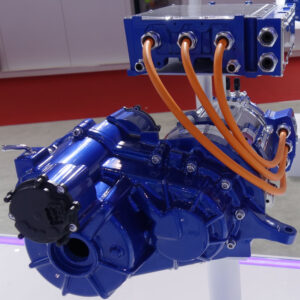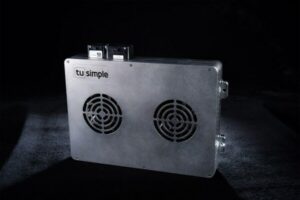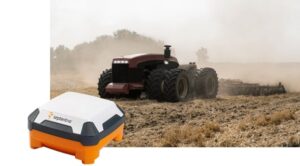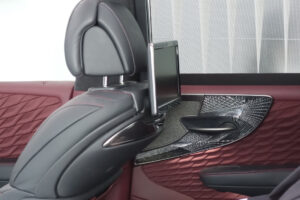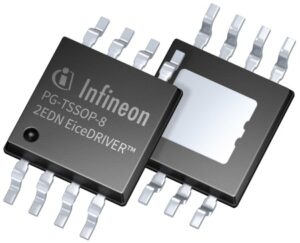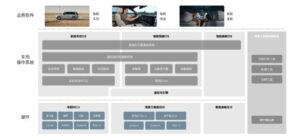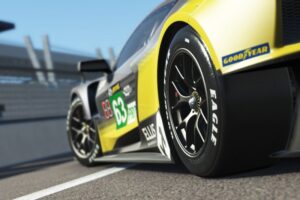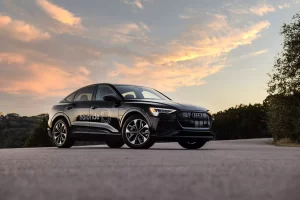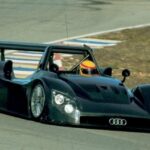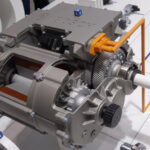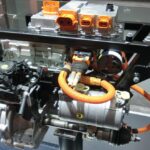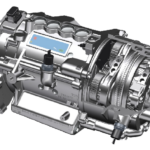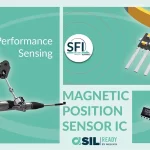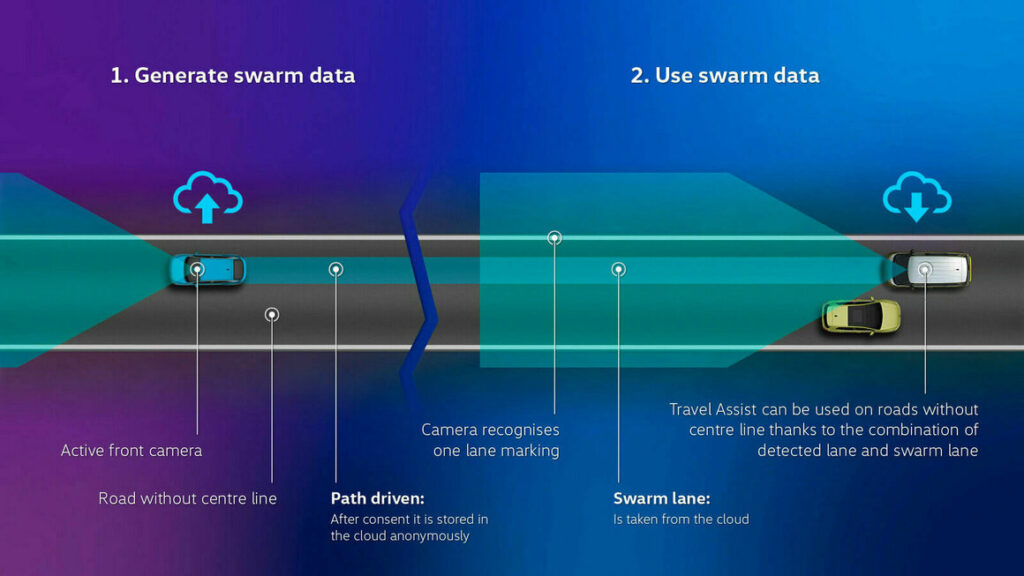
The optional Travel Assist can keep the vehicle in lane, maintain a distance from the vehicle in front and also ensure that the vehicle keeps to a maximum speed set by the driver. Among other things, it uses the adaptive lane guidance system for this. This system actively keeps the vehicle in the middle of its lane. Travel Assist adapts itself to the driver’s driving style and can also keep the vehicle further left or right in the lane instead of exactly in the centre. Travel Assist also comes with predictive cruise control and a cornering assist function. Here, the vehicle speed can be adapted to valid speed limits and the course of the road (bends, roundabouts, etc.).
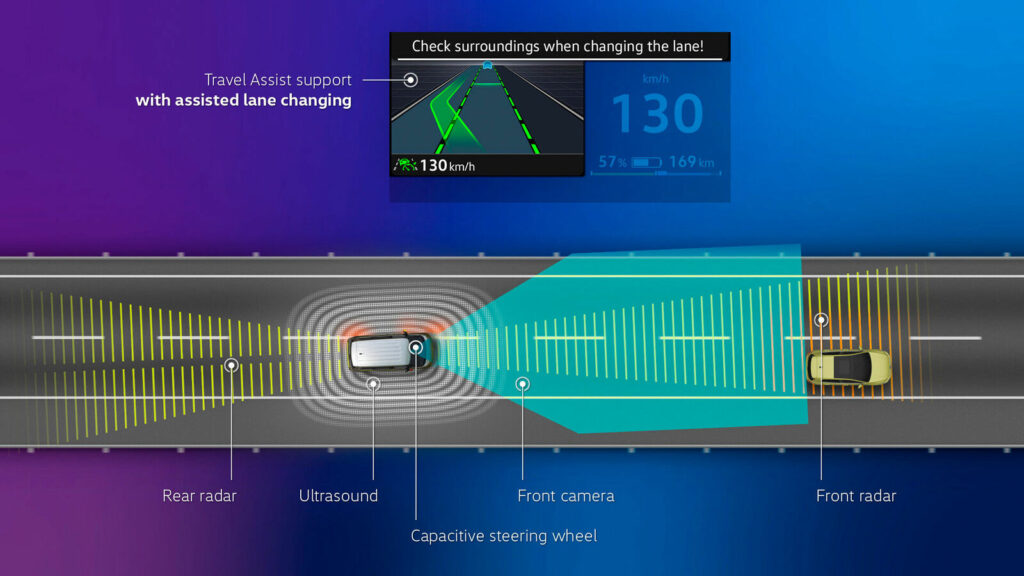
When driving on motorways at speeds above 90 km/h, Travel Assist with swarm data can actively support lane changes if this is desired by the driver. When activated, the lane change process can be started and executed by tapping the turn signal. For the operation to be completed, the sensors must not have detected any objects around the vehicle and the capacitive steering wheel must be able to detect the driver’s hands. The ID. Buzz then automatically steers itself into the desired lane. The driver is able to intervene at any time and take over the manoeuvre.
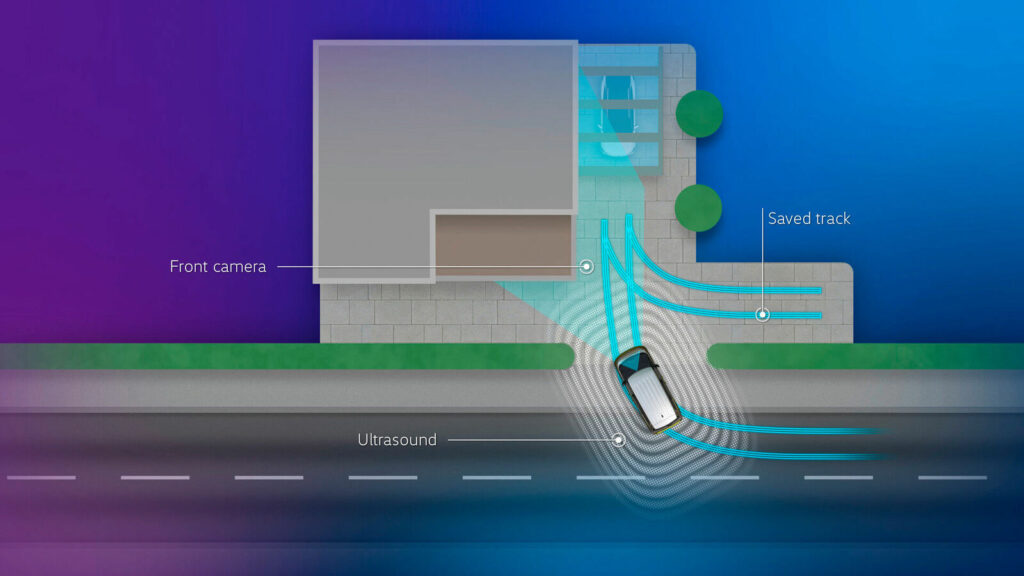
The second optional assistance system in the ID. Buzz is Park Assist Plus with memory function. This innovative driver assistance system can be used to teach the vehicle up to five individual parking manoeuvres. The memory function remembers parking procedures at speeds below 40 km/h and covering distances of up to 50 metres. This allows the vehicle to be parked in a carport or garage, for example. The driver only has to park the vehicle once and save the parking procedure. The ID. Buzz can then repeat the learned parking manoeuvre on its own. All the driver has to do then is monitor the situation.
After activation in the Parking menu, Park Assist Plus can also search for a parking space and carry out the parking manoeuvre. When driving past parking spaces, the intelligent assistance system detects suitable parallel parking spaces at speeds of up to 40 km/h and parking bays at up to 20 km/h. The driver then only needs to stop at the selected parking space, press the brake and activate and monitor the parking procedure. The assistance system parks the ID. Buzz with the aid of the sensors that monitor the surroundings – it steers, accelerates, brakes and changes gear. It can also continue parking manoeuvres that have been started by the driver and complete them if possible. The system also provides support when driving out of parallel parking spaces again.

